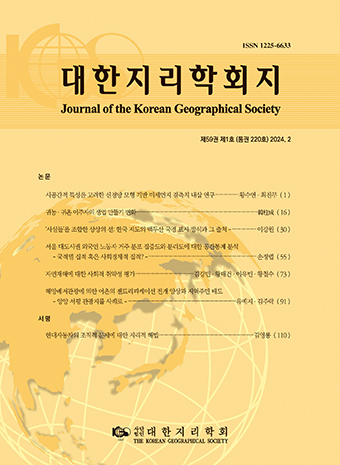Research Article
Abstract
References
Information
- Publisher :The Korean Geographical Society
- Publisher(Ko) :대한지리학회
- Journal Title :Journal of the Korean Geographical Society
- Journal Title(Ko) :대한지리학회지
- Volume : 57
- No :6
- Pages :517-530
- Received Date : 2022-09-26
- Revised Date : 2022-12-23
- Accepted Date : 2022-12-27
- DOI :https://doi.org/10.22776/kgs.2022.57.6.517




 Journal of the Korean Geographical Society
Journal of the Korean Geographical Society







